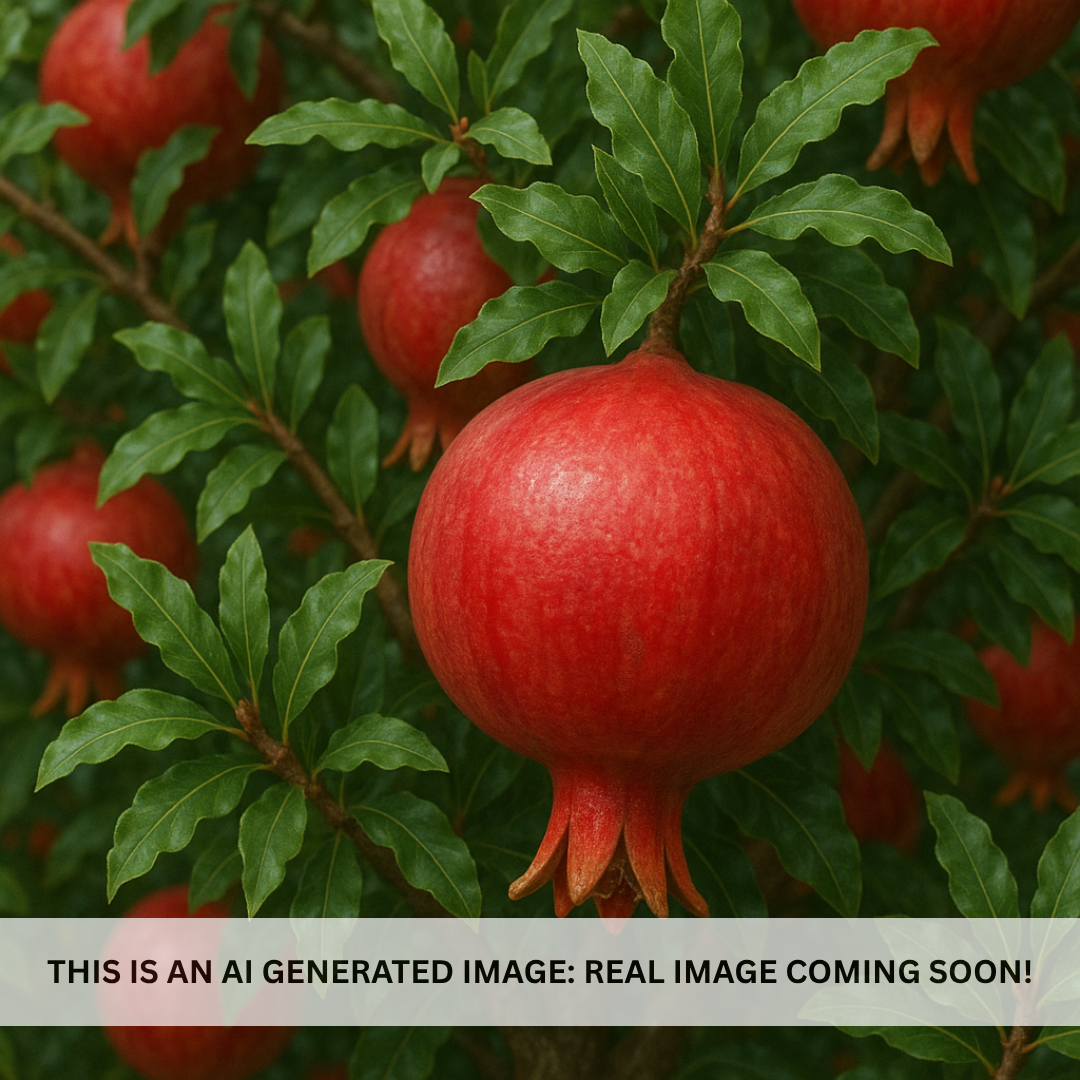My Store
Wonderful Pomegranate
Wonderful Pomegranate
Couldn't load pickup availability
Plant Type: Deciduous Fruiting Shrub or Small Tree
Plant Height: 8–12 feet
Spread: 8–10 feet
Flower Color: Bright Orange-Red
Sun Exposure: Full Sun
Wonderful Pomegranate: Vibrant Blooms and Sweet, Juicy Fruit
The Wonderful Pomegranate (Punica granatum ‘Wonderful’) is the most popular and reliable fruiting pomegranate variety grown in Arizona. Known for its showy orange-red flowers, glossy foliage, and abundant harvest of rich, ruby-red fruit, it’s both ornamental and productive. This heat-loving shrub thrives in Arizona’s dry climate, making it a top choice for homeowners who want a beautiful and low-maintenance fruit tree.
Key Features of Wonderful Pomegranate
Beautiful Flowers: Brilliant orange-red blooms cover the plant in late spring and early summer, adding striking color to any landscape.
Heavy Fruit Production: Produces large, deep-red pomegranates with sweet-tart flavor—excellent for juicing, snacking, or fresh eating.
Compact Growth: Reaches 8–12 feet tall and wide, ideal for smaller yards, courtyards, and garden borders.
Heat & Drought Tolerant: Performs exceptionally well in full sun and hot desert conditions with minimal water once established.
Low Maintenance: Naturally pest-resistant and long-lived, requiring only light pruning and occasional watering.
Growing and Care Tips
- Soil: Prefers well-drained soil; tolerant of sandy or rocky soils common in the Phoenix Valley.
- Water: Moderate water needs; deep water during fruit development for best yield.
- Fertilizer: Apply a balanced fruit tree fertilizer in early spring before new growth starts.
- Pruning: Light pruning in winter or early spring to shape the plant and improve air circulation.
Landscaping Uses
- Edible Landscaping: Combines beauty and productivity in one plant.
- Accent or Hedge: Works well as a colorful hedge or specimen shrub.
- Patio or Courtyard Gardens: Compact size fits neatly into small spaces and containers.
- Pollinator Gardens: Flowers attract hummingbirds and beneficial insects.
Summary
The Wonderful Pomegranate is a must-have for Arizona homeowners who love both beauty and utility. Its brilliant flowers, tasty fruit, and desert-friendly nature make it one of the most rewarding and low-maintenance plants to grow. Whether used as an ornamental accent or fruit producer, it provides vibrant color and seasonal interest year after year.
Three Timbers Installation Guide (Feel Free to Follow):
Wonderful Pomegranate (Punica granatum ‘Wonderful’) Planting Guide:
Location: Full sun (at least 6–8 hours of direct sunlight daily)
Soil: Well-drained soil; tolerant of sandy or rocky conditions
Spacing: Plant 8–10 feet apart for hedging or 10–12 feet apart as individual specimens
Planting Depth: Keep root ball level with surrounding soil
Support: Not required; naturally self-supporting structure
Watering Guide:
Watering After Planting:
- Initial Watering: Deeply water root ball immediately after planting.
- Frequency: Every 2–3 days for the first 2–3 weeks.
- Amount: Provide 5–10 gallons per watering session for young plants.
When is the Plant Established?
- Timeframe: 2–3 months after planting when new shoots appear and roots spread outward.
Watering Once Established:
- Summer: Deep water every 7–10 days during hot months, especially when fruit is developing.
- Winter: Water every 3–4 weeks, depending on rainfall.
Drip Irrigation Setup:
- Placement of Emitters: Place emitters 12–18 inches from the base of the plant.
- Flow Rate: 1–2 gallons per hour per emitter.
- Number of Emitters: 1–2 per shrub; add more as it matures.
- Adjusting Frequency: Increase during fruiting and high heat; reduce in winter months.
General Watering Tips for Wonderful Pomegranate
- Soil Check: Water when the top 2–3 inches of soil feel dry.
- Avoid Overwatering: Ensure good drainage—pomegranates prefer slightly dry conditions between waterings.
- Mulch: Apply a 2-inch layer of gravel or organic mulch around the base to conserve moisture and regulate soil temperature. Keep mulch a few inches away from the stem.
Share














